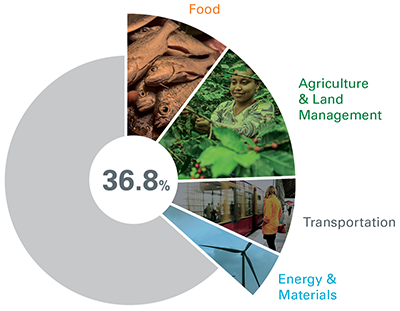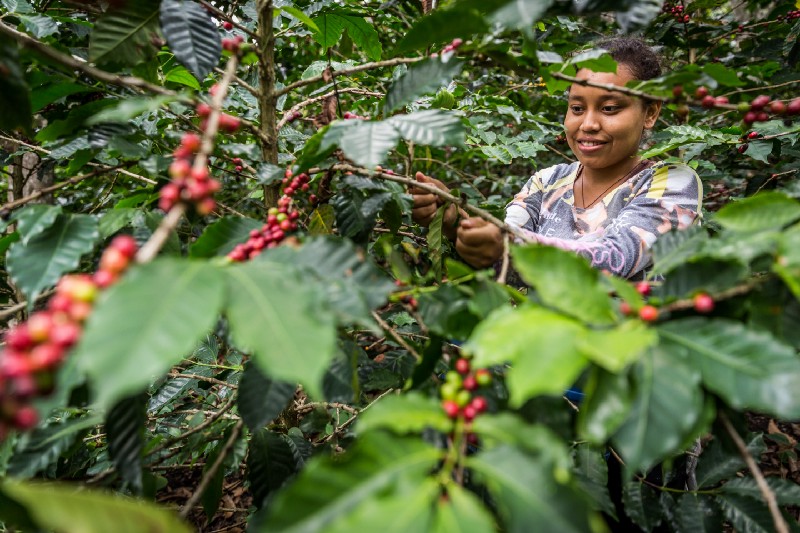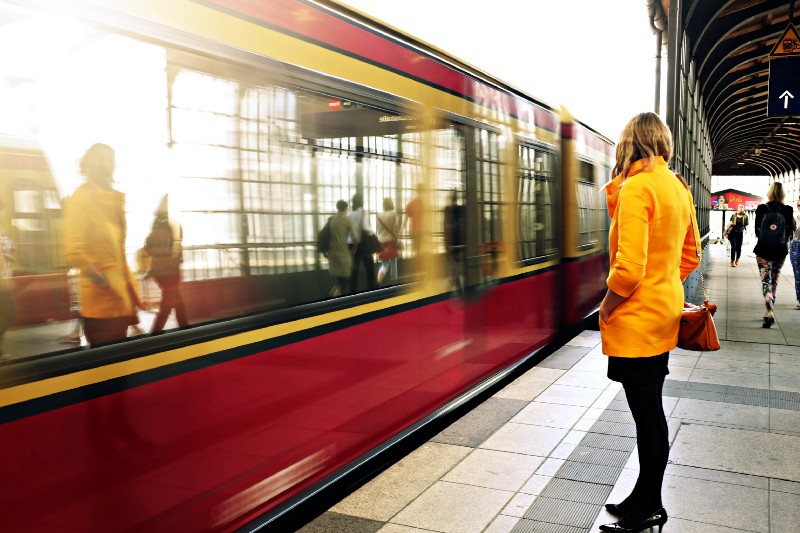We get it, climate change often makes for a depressing read and can feel too big for individuals to do anything about. We’re sure you’ve read countless articles that list ways you can help save the planet or reduce your carbon footprint. These leave us feeling a) worried that we have to change everything we do; b) confused as to why our small, everyday decisions matter; or c) overwhelmed with the sheer number of things we should be doing differently. Cue brain’s reaction: run away!
But there’s truth to the notion that your behavior matters. Daily actions like eating more vegetables, taking care of our soils, riding public transportation, and adopting energy efficient technologies can collectively contribute to shrinking global carbon emissions.
That’s why we recently released a new report, Climate Change Needs Behavior Change: Making the Case for Behavioral Solutions to Reduce Global Warming, to showcase how and why individual behavior matters for mitigating greenhouse gas emissions. Using data from the comprehensive analysis of a wide range of solutions compiled in the bestseller, Drawdown, edited by Paul Hawken, we identified 30 solutions that rely on individual behavior.
 This isn’t just another list of green behaviors. Solutions are only as good as their adoption; we need a methodology to put great ideas into action. Given the urgency and rapid pace of climate change, we need new strategies for effecting behavior change. Applying behavioral science tools, such as appealing to people’s emotions, leveraging social norms, and influencing decision-making environments, is one promising path for the more sustainable use of natural resources and curbing climate change impacts.
This isn’t just another list of green behaviors. Solutions are only as good as their adoption; we need a methodology to put great ideas into action. Given the urgency and rapid pace of climate change, we need new strategies for effecting behavior change. Applying behavioral science tools, such as appealing to people’s emotions, leveraging social norms, and influencing decision-making environments, is one promising path for the more sustainable use of natural resources and curbing climate change impacts.
We sorted our 30 solutions into four categories: food, agriculture and land management, transportation, and energy and materials. Through our exploration of these solutions, we found that they have the potential to reduce about a third of the projected cumulative emissions from 2020 to 2050. What follows is a teaser of some of our favorite solutions that are especially promising if we apply principles of behavioral science and individuals adopt them at scale. (1)
 FOOD: Plant Rich Diets
FOOD: Plant Rich Diets
(66.1–87.0 GtCO2-eq)
What it means: Eating more plant-based foods and fewer animal proteins and products (e.g., meat, dairy).
Why it matters: According to the World Resources Institute (WRI), global average per person protein consumption exceeds dietary requirements across all world regions and is expected to grow. Animal proteins are a significant driver of climate change, with emissions from the livestock sector estimated at 7.1 GtCO2-eq per year, equivalent to 14.5% of anthropogenic greenhouse gas emissions.
Applying behavioral insights — Choice Architecture: Researchers at the Better Buying Lab have found that people are influenced by the presentation and context of plant-based options when choosing what to eat. In one study, diners were more likely to choose vegetarian items if they were scattered throughout a restaurant menu rather than contained to a special section, as this framed plant-based dishes as equally accessible to everyone.
 AGRICULTURE AND LAND MANAGEMENT: Regenerative Agriculture
AGRICULTURE AND LAND MANAGEMENT: Regenerative Agriculture
(23.2–32.4 GtCO2-eq)
What it means: Adopting at least four of the following six agricultural practices: compost application, cover crops, crop rotation, green manures, no-till or reduced tillage, and/or organic production.
Why it matters: Farming remains dominated by families on smaller plots of land even as commercial farming grows. Farms who have adopted regenerative agriculture practices are finding that soil carbon levels increase from one to two percent to five to eight percent over ten years, which can store 25–60 tons of carbon per acre. This form of agriculture also results in better soil health, crop productivity, and human health.
Applying behavioral insights — Social incentives: Due to close farming networks, when one farmer makes a change to their practices, it can have a ripple effect in the whole community. In Ecuador, we’ve observed the change that occured when a single farmer took steps to protect acres of forest from agricultural use and how neighboring farmers noticed this as a chance to match this farmer’s efforts, leading to a larger social movement of conservation.
TRANSPORTATION: Mass transit
(6.6–26.3 GtCO2-eq)
What it means: Using public transportation for commuting in cities instead of individual vehicles.
Why it matters: Mass transit (i.e., bus, metro, tram, commuter rail) reduces travel in personal vehicles, a rapidly growing source of emissions across the world. The proliferation of transportation mobile apps, biking and walking paths, and increasingly efficient and reliable forms of mass transit are making low-carbon options preferable.
Applying behavioral insights — Choice architecture: Today, there are a number of apps that help urban commuters use public transportation. With real-time schedules and the ability to check multiple modes of travel, new technologies are giving people more affordable, reliable, convenient, and safe ways of getting to their destination without driving personal vehicles or the frustration of sitting in traffic.
 ENERGY AND MATERIALS: Rooftop Solar
ENERGY AND MATERIALS: Rooftop Solar
(24.6–40.3 GtCO2-eq)
What it means: Installing rooftop photovoltaic systems under one megawatt for household use.
Why it matters: Rooftop solar systems can have a huge impact on reducing greenhouse gas emissions by 2050 through their production of clean energy from the sun. As prices continue to be more affordable, there are estimates that rooftop solar could contribute 6.88 percent of total electricity generation worldwide by 2050, which is approximately 3,578 terawatt-hours.
Applying behavioral insights — Emotional appeals: Renewable energy is becoming a more readily available option for communities around the globe, and with that comes feelings of autonomy and pride. Being independent from a larger grid can bring a household a sense of security as well as something to show off to friends and family. Rooftop solar is bringing electricity to rural communities to create new education, health, and business opportunities while at the same time helping urban ones rely less on fossil fuels.
We’re excited about where these and the rest of the 30 solutions could lead us in mitigating climate change. Rare’s Center for Behavior & the Environment is actively working with fellow conservation leaders on identifying finalists for our Solution Search contest, Climate Change Needs Behavior Change as well as partners in the field of behavioral science to design and share interventions that encourage behavioral adoption. If you’re interested in learning more, we encourage you to read out the full report here and visit our Solution Search contest site here.
(1) With each solution, you’ll notice a numeric range as well as the units, GtCO2-eq. The first number in the range presents the impact of that solution in a conservative emissions reduction scenario (think more than business as usual, but not radical change) and the second number is the impact for a more ambitious scenario (think 100% renewable energy). The units translate to the gigatons of carbon dioxide-equivalent greenhouse gases (e.g., carbon dioxide, nitrous oxide, methane) that could be avoided by 2050.
 FOOD: Plant Rich Diets
FOOD: Plant Rich Diets AGRICULTURE AND LAND MANAGEMENT: Regenerative Agriculture
AGRICULTURE AND LAND MANAGEMENT: Regenerative Agriculture
 ENERGY AND MATERIALS: Rooftop Solar
ENERGY AND MATERIALS: Rooftop Solar